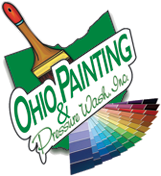In a previous post we talked about the difference between latex and acrylic paint. For exterior residential painting applications, either a pure acrylic or a latex/acrylic blend are the most common types of paints used. However, in some instances and conditions it may be advisable to use an enamel paint to achieve the best results.
What is Enamel Paint?
Enamel paint is formulated with an oil or solvent base. In other words, enamel is a term that refers to non water-based paints. Enamel paints are more durable and less susceptible to damage than acrylic/latex paints. Enamel paints dry to a gloss or semi-gloss finish, provide a hard protective surface, and are less likely to fade when exposed to direct sunlight.
What are the Advantages of Using Enamel Paint?
Primarily, enamel paints are more durable and longer-lasting than latex/acrylic paints. Enamel paints are more resistant to damage from heat and their glossy finish can create a more luxurious look and feel.
What are the Disadvantage of Using Enamel Paint?
Oil or solvent-based paints are more expensive than latex/acrylic paints and contain VOCs (Volatile Organic Compounds) that can produce noxious off-gases. While the overall drying time is greater for enamel paints, the top surface of the paint can dry more rapidly leaving brushstrokes or other imperfection in the finish.
When to Use Enamel Paint?
Enamel paint can be used on a home exterior, but it will add considerable cost to the project. Generally enamel paints are ideal for items like deck furniture or exterior areas more frequently exposed to extreme weather conditions.
Where to Use Enamel Paint?
In southern or southwestern areas of the country, like Florida, Mississippi, Alabama, Louisiana, Texas, New Mexico, Arizona, where high temperatures and other extreme weather conditions can cause latex paint to fail, enamel paint is a more appropriate choice for a residential exterior.
Photo by Ravi Sharma on Unsplash

